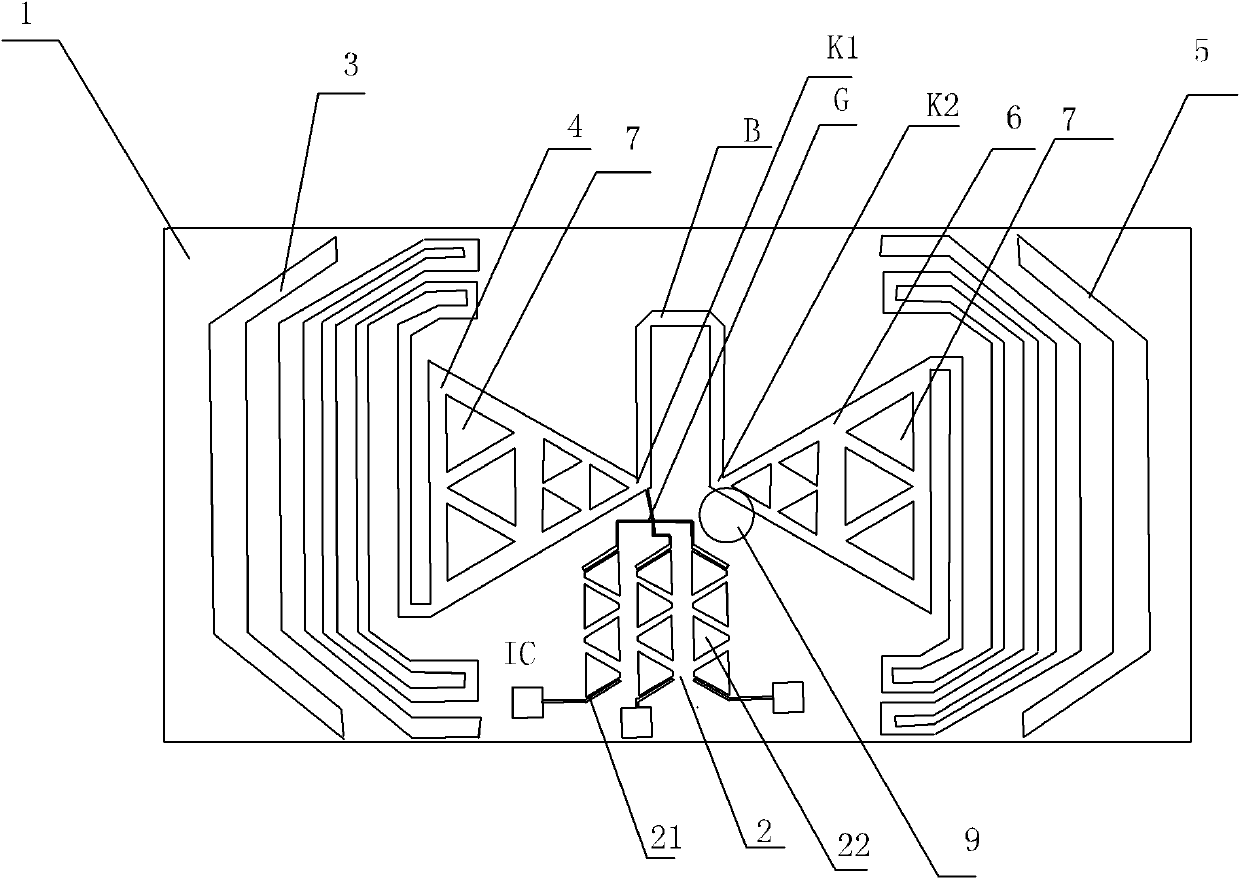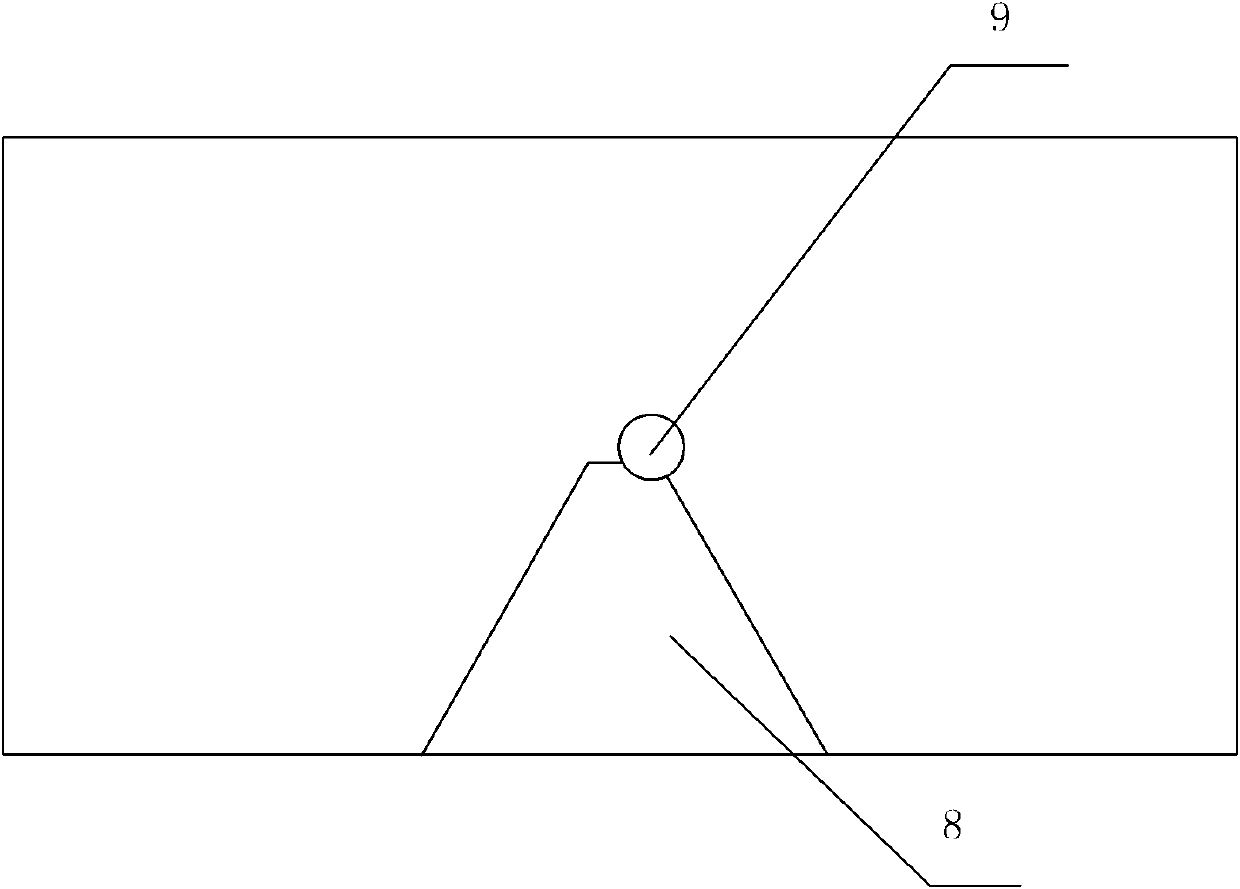Multi-mode passive tag
A technology of passive tags and microstrip antennas, which is applied to record carriers used by machines, instruments, computer components, etc., can solve problems such as increasing R&D, production and application costs, limiting tag flexibility, and suppressing system versatility. Achieve the effects of convenient control, simple production and processing technology, and low cost
- Summary
- Abstract
- Description
- Claims
- Application Information
AI Technical Summary
Problems solved by technology
Method used
Image
Examples
Embodiment 1
[0026] Embodiment 1: a dual-mode passive label, including a substrate 1, the front of the substrate 1 is provided with a printed dipole antenna, a printed microstrip combiner 2 and two communication processing chip ICs, and the printed dipole antenna includes The first part antenna and the second part antenna with the same structure and symmetrical distribution, the first part antenna has a first feed end K1, the second part antenna has a second feed end K2, the first feed end K1 and the second feed end A balanced and unbalanced converter B is arranged between K2, the printed microstrip combiner 2 includes a common terminal G and two discrete terminals 21, and the common terminal G of the printed microstrip combiner 2 is connected to the first feeding terminal K1 Each discrete end 21 of the printed microstrip combiner 2 is connected to a communication processing chip IC. The two communication processing chip ICs are the high-frequency tag chip model SRF55V10P and the low-frequ...
Embodiment 2
[0029] Embodiment 2: A three-mode passive tag, other parts are the same as the dual-mode passive tag in Embodiment 1, the difference is that there are three communication processing chips IC, and the printed microstrip combiner 2 includes a three-way filter , the printed microstrip combiner 2 has three discrete terminals 21, and each discrete terminal 21 is connected to a communication processing chip IC. By analogy, the structure of other multi-mode passive tags can be known. There are various types and specifications of the communication processing chips here. The three communication processing chips are the high-frequency tag chip model SRF55V10P, the UHF tag chip model UCODE SL3 IC S10 and the low-frequency tag chip model HITAG S. .
PUM
 Login to View More
Login to View More Abstract
Description
Claims
Application Information
 Login to View More
Login to View More - R&D
- Intellectual Property
- Life Sciences
- Materials
- Tech Scout
- Unparalleled Data Quality
- Higher Quality Content
- 60% Fewer Hallucinations
Browse by: Latest US Patents, China's latest patents, Technical Efficacy Thesaurus, Application Domain, Technology Topic, Popular Technical Reports.
© 2025 PatSnap. All rights reserved.Legal|Privacy policy|Modern Slavery Act Transparency Statement|Sitemap|About US| Contact US: help@patsnap.com



